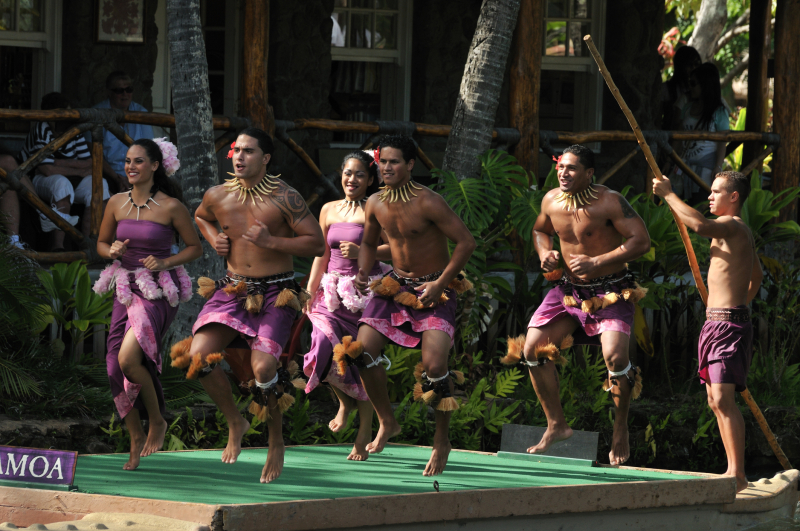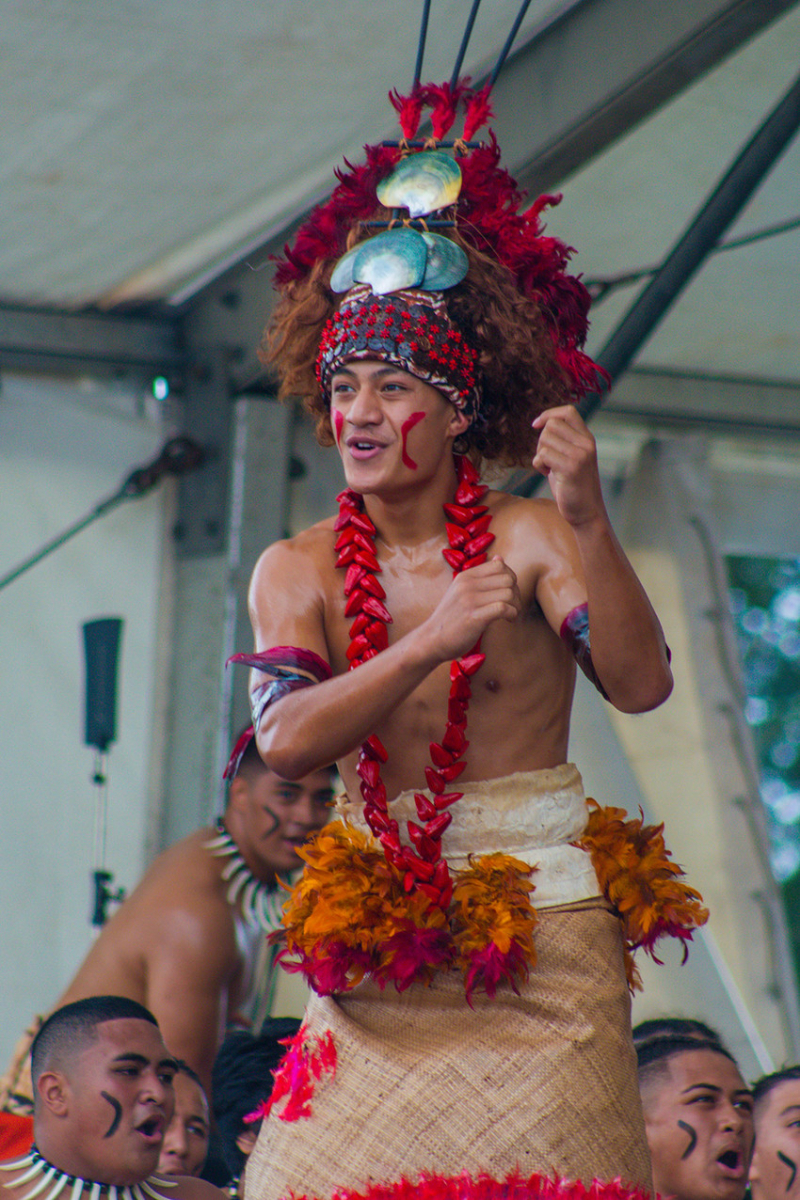Dance
Samoan dance traditions reflect contact between Samoan culture and other East and West cultures. The location of the dance has been interpreted as a microcosm of Samoan society. Samoan dance has been described as a means of preserving Samoan identity in the face of contact with other civilizations.
The siva is a traditional Samoan dance. The female siva moves her hands and feet gently in time to music. The sasa is a group dance performed sitting to the beat of a drum. The fa'ataupati is traditionally performed by Samoan males in groups with no music accompaniment. Other types of dance practiced by younger generations include modern dance. Traditional Samoan dance is arguably the only aspect of Samoan culture unaffected by Western Civilization. The maulu'ulu is a female-only group dance, and the taualuga is the main Samoan traditional dance performed by a village chief or village chiefess.
The taualuga is a Samoan traditional dance that is performed at special occasions. It is regarded as the pinnacle of Samoan performance and the focal point of Samoan tradition. This is a sacred dance to the Samoans and should be performed with reverence. The taualuga is traditionally performed by a high chief's daughter or son. Samoa's villages are autonomous and are led by a council of matai known as the 'village fono.' When performing public ceremonial roles, the daughter of a high chief in a village is known as a taupou; the male equivalent is the manaia. However, in a taualuga performance, the taupou is the main dancer, and the two male dancers are her supporters (aiuli). These roles are taken by important individuals in leadership or other significant roles in certain organizations, such as church groups or schools.














